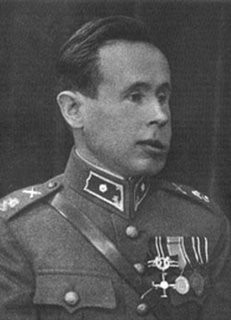Monticello, Jefferson’s “little mount” is
a national historic landmark upheld by the Thomas Jefferson Foundation which
runs the house as a museum and interactive estate. Inheriting land from his
father, Jefferson began construction at twenty six and eventually accomplished
the plantation in 1772 upon which he cultivated tobacco and wheat. After
acquiring modern architectural ideals from his time spent in Europe after the
death of his wife, Martha Skelton, Jefferson decided to renovate his homestead
into a neoclassical structure. Throughout his presidency, from 1809 until his
death in 1826, he continued to remodel-a process which was adapted by the
Thomas Jefferson Foundation. The private non-profit organization purchased the
property in 1923 and currently operates Monticello as a museum and educational
institution.

I drove through thick Virginian wood
until I reached the site prized atop a secluded buff in Charlottesville,
Virginia. The villa overlooks the surrounding landscape and a grand visitors’
center that rests at the base of Monticello. Decorated by a naturalistic layout, the
epicenter contains a ticket office, fountain, picnic tables, and a store that
guests can browse while waiting to load onto a bus which carries tourists to the guided tour area. Once divided into a group, I was escorted
about the premises by a tour guide. We approached the house along a gravely
road and eventually I vaulted the steps of Monticello herself. Beginning at the Entrance
Hall, the tour then proceeded to the study, library, private bedrooms, and parlor. Once
the tour concluded on the balcony, visitors were allowed to roam freely.

Highly
interested in horticulture, botany and agriculture, Jefferson entertained a
lifelong pursuit of beautifying his grounds, establishing and nurturing an
impressive flower and vegetable garden and vineyard. Fortunately the Garden
Club of Virginia managed to reconstruct Jefferson’s garden to its current state,
providing the public with a greenhouse blooming with over one hundred and five different
species. I took advantage of this opportunity to explore the gardens, Jefferson’s
prized orchard, and slave quarters along Mulberry Road before paying my respects
at the family graveyard.
One of the most intriguing aspects of
the statesman’s home was the welcome in which Thomas greeted his many visitors.
Stunning his guests with revolutionary architecture and a personal reception,
Jefferson also desired to impart his guests with a sliver of knowledge, an
appreciation for culture and a portion of America’s rich history. He impressively
furnished the Entrance Hall with maps, fossils, antlers, hides and various
artifacts which Lewis and Clark had collected along their expedition, a mission
personally sponsored by the Third President.

Serving as a museum and
conversation piece, the Entrance Hall is filled with natural relics, Native American
finery and artistic pieces that were meant to entertain and educate Jefferson's
house guests. A humorous finding within this scene is that of a bust of
Alexander Hamilton, his political opponent, fixed to eternally gaze across at
the stony replica of Jefferson. A rather amusing detail is that Jefferson
crafted his own likeness slightly larger than the Federalist. My tour guide
explained that the two adversaries were intended to be “opposed in death” as
they were in life; serving as a motivational challenge for Jefferson whenever
he passed his threshold.

However, my favorite portions of
Jefferson’s house were the parlor and the “Madison” room. Honorably, the
Jefferson family referred to the west wing of the house as the Madison room for
James and Dolly frequently visited and would often enjoy months of their dear
friend’s company. On the other hand, the parlor featured
as a living room specifically intended for discussion and entertainment. Jefferson is famously known as a violinist while many
of his family members were also talented musicians who enjoyed hours of conversation,
dancing and chess. The family would typically gather in the evenings to read.
Virginia Randolph, Jefferson’s granddaughter, later recalled that
sometimes while she was reading she would see him “raise his eyes from his own
book, and look round on the little circle of readers and smile.” Reading would
prove to be one of Jefferson’s greatest joys and in order to accommodate his company;
Thomas installed a variety of chairs and sofas about Monticello, such as the
campeachy chair.

Known as “siesta” chairs, Jefferson was often seen reclining
in one with a book. Encouraged to try out the comfortable chair, I kindly took
up the offer. I highly recommend its luxurious charm but inwardly cringed at the
price of another campeachy I found in the store. I moved on from the chair and
soon became fascinated by the numerous innovations Jefferson crafted which were
showcased about the parlor. Jefferson is credited for designing a revolving
closet, a dumbwaiter system based on the French dinning style, a weighted clock
and even a dual pen which aided his many annotations.

Besides hosting notable
figures that inspired Jefferson’s personal ideology, Jefferson also decorated
the parlor and many of his private studies with busts of his close companions
including Benjamin Franklin, James Madison, George Washington and even the
distant Marquis de Lafayette. As I highly regard the French general, I was delighted
to discover that his likeness was scattered about Monticello. Perhaps inspired
during his tenure as Minister to France, Jefferson borrowed heavily from the
French. Utilizing their sliding doors, modernized color schemes and artistic
patterns, Jefferson designed his beloved home in an unconventional method unfamiliar to Colonial America.
Monticello remains an internationally
acclaimed portion of world heritage, the only American house to be protected by
the United Nation’s as an invaluable treasure and resource. Fun and
interactive, the Monticello website is well organized with professional and
engaging graphics and a surplus of links that are categorized according to
Jefferson’s personal life, the architecture and the overall layout of his home.
The website is user friendly and makes observing different portions of the site
accessible while offering educational field trips, behind the scenes tours and
holiday packages.
Additionally, the site features an elaborate greeting center
and shop which contains authentic recipes, cheeses, wines, candles and books relating
to the 18
th century as well as tourist merchandise. The tour was an appropriate length and
set at an affordable price although I wish one was allowed to study the rooms to
a greater extent during or after the tour. In addition to receiving funding
from private sponsors, the horde of annual tourists provides an ample income to
regulate and improve the grounds for public history. Overall, this historic
site is properly managed and maintained by the Thomas Jefferson Foundation
which has successfully operated Monticello and intends to preserve the legacy
of Thomas Jefferson for generations.
Suggested Reading:
Hatch, Peter J. “A Rich
Spot of Earth”, Thomas Jefferson’s
Revolutionary Garden at Monticello. Monticello.org.
Fleming, Thomas.
"The Jew Who Helped Save Monticello", The Jewish Digest, February 1974: 43–49.












































